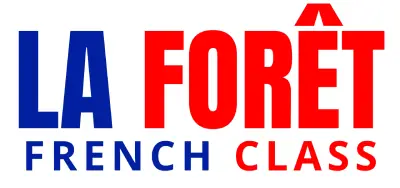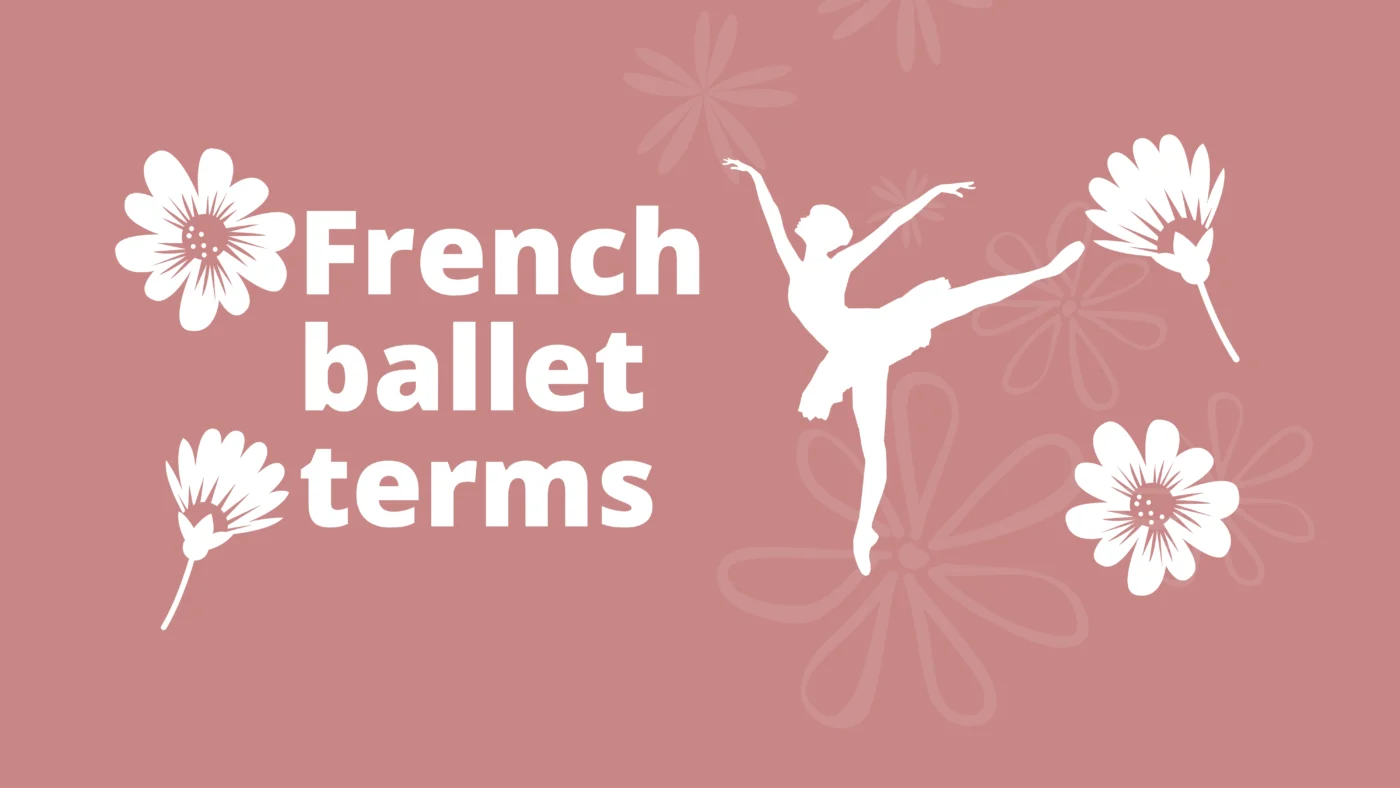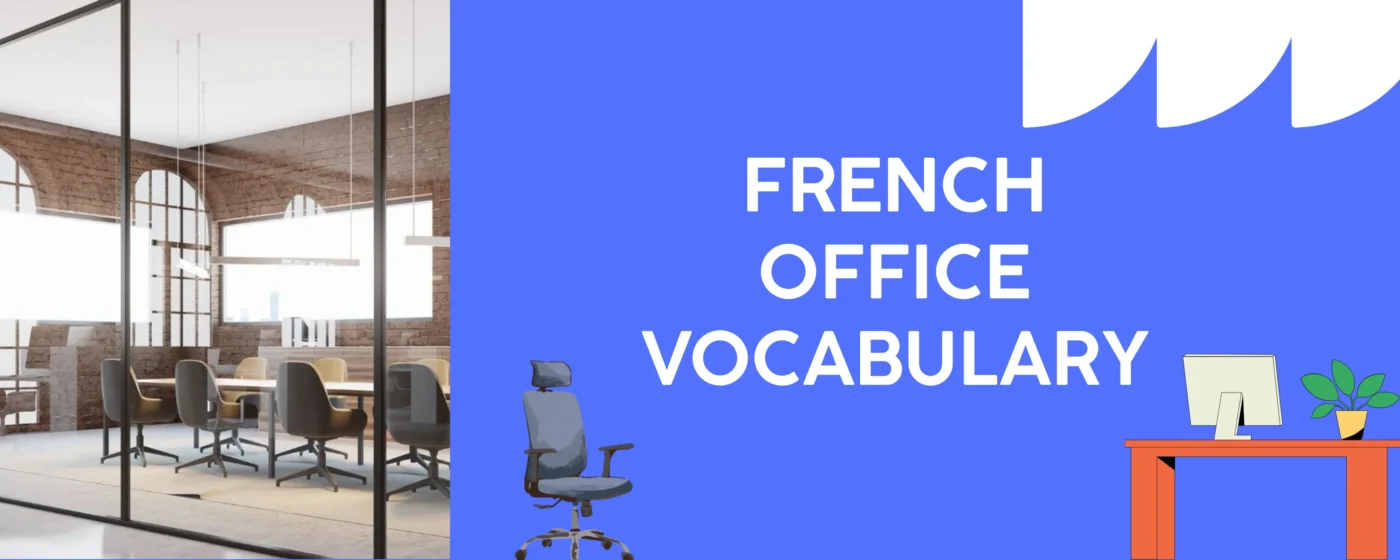French terminology is the backbone of ballet’s communication and a window into appreciating the technical mastery of dancers. The standardized French terminology allows dancers from all corners of the world to understand each other during training and collaboration. It removes language barriers and ensures everyone is on the same page
Key Takeaways
- Know the French rules of ballet thanks to Louis XIV’s 1661 Académie, from the première to cinquième position , which built perfect turnout, balance for everything.
- Read about the studio essentials for ballet, like une ballerine (ballerina), des pointes (pointe shoes), un tutu, une barre, gear every dancer lives in.
- Learn the Core steps of ballet, such as plié (bend), pirouette (spin), arabesque (leg back), chassé (glide), and pas de chat (cat jump).
- Know the advanced flair of the ballet, such as grand jeté (big split leap), fouetté (whip turns), en pointe (on toes), and pure athletic poetry.
- Learn expressive magic of the ballet port de bras (arm carriage), épaulement (shoulder tilt), and turns technique into storytelling emotion.
Why is French the language of Ballet?
French holds a significant place in the world of ballet, reflecting its deep historical roots and global influence. Ballet, as an art form, originated in the royal courts of Italy and France during the Renaissance. French courts became the cradle of ballet as we know it. Kings like Louis XIV and artistic minds like Pierre Beauchamp significantly shaped the art form and therefore ballet flourished and formalized into the structured art form we recognize today.
The king himself was a passionate dancer and established the Académie Royale de Danse in 1661, which played a pivotal role in standardizing ballet terminology and technique in the French language. How interesting is this little tidbit of knowledge!
Basic Ballet Positions
The foundation of all graceful movement in ballet lies in its five basic positions:
| Basic Ballet Position | English Meaning |
|---|---|
| Première Position | First Position |
| Seconde Position | Second Position |
| Troisième Position | Third Position |
| Quatrième Position | Fourth Position |
| Cinquième Position | Fifth Position |
These positions train proper foot placement, posture, and turnout (rotation of the legs from the hip). Mastering them builds the strength, balance, and control needed for more advanced steps and choreography.
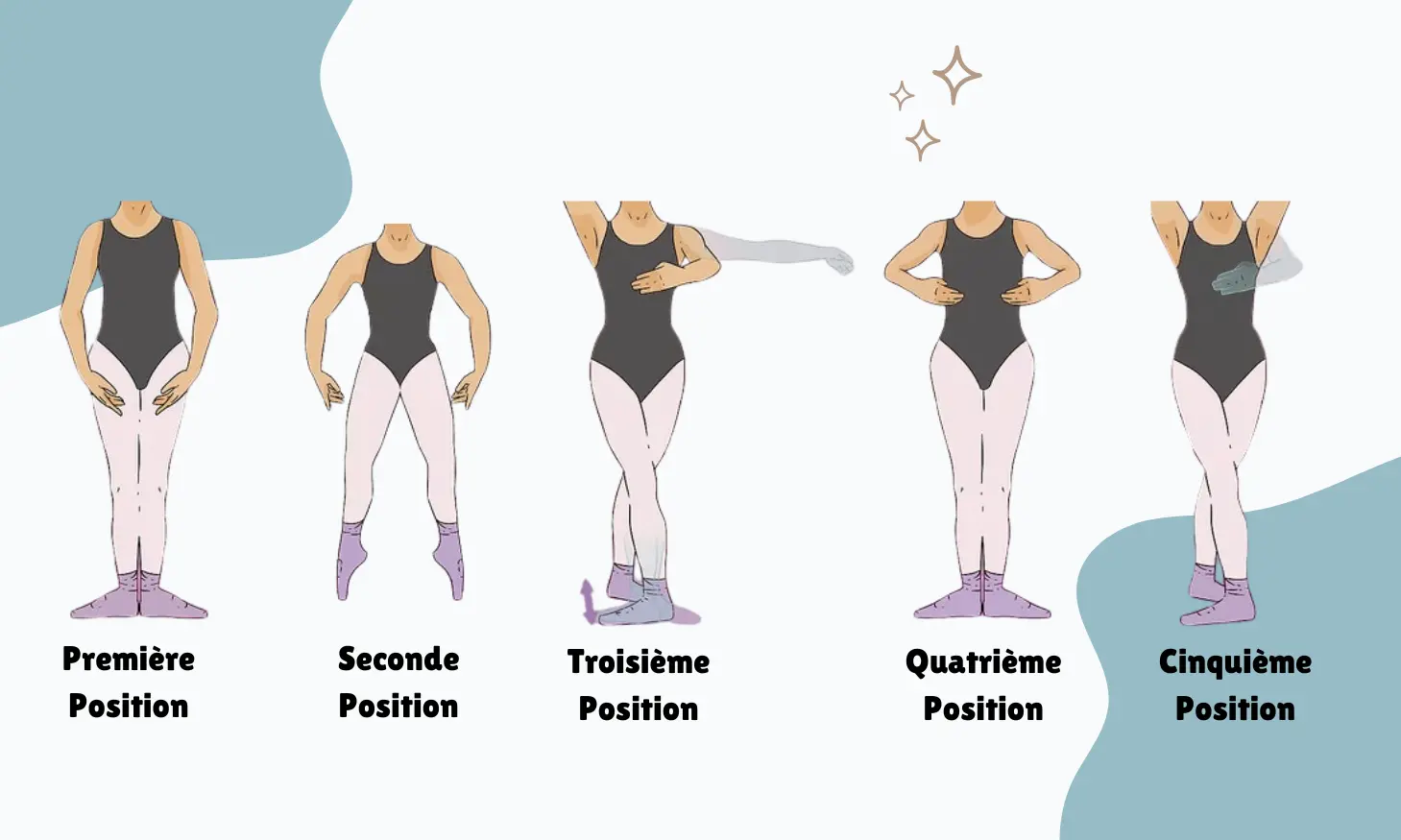
Professional Ballet Terms
Here are some professional ballet terms to know with French names as well as English meanings:
| French Term | English Meaning |
|---|---|
| Une Ballerine | A female ballet dancer or ballerina |
| Un Corps de Ballet | The main group of dancers in a ballet company who perform together |
| Un Danseur | A male ballet dancer |
| Un Danseur Étoile | A male lead dancer in a ballet company known for her exceptional technical and artistic skills or a male star dancer |
| Une Danseuse Étoile | A female lead dancer in a ballet company known for her exceptional technical and artistic skills or a female star dancer (prima ballerina) |
| Un Petit Rat | A young ballet student |
Ballet Clothes and Equipment
Here are some common ballet clothes and equipment terms in French, with pronunciations and English meanings:
| French Term | English Explanation |
|---|---|
| Un Collant | Tights, typically made of nylon or spandex, worn by dancers for warmth and coverage |
| Des Chauffe-mollets | Leg warmers |
| Des Chaussons | Typical soft ballet shoes, made of canvas |
| Un Justaucorps | A leotard – the basic close-fitting garment worn by both male and female dancers |
| Un Maillot | Another term for a leotard, used specifically for female dancers |
| Des Pointes | Pointe shoes – ballet shoes with reinforced shanks for dancing on point |
| Un Tutu | The iconic layered skirt worn by female ballet dancers, typically in white |
| Une Barre | A long horizontal bar dancers use for support during exercises and stretches |
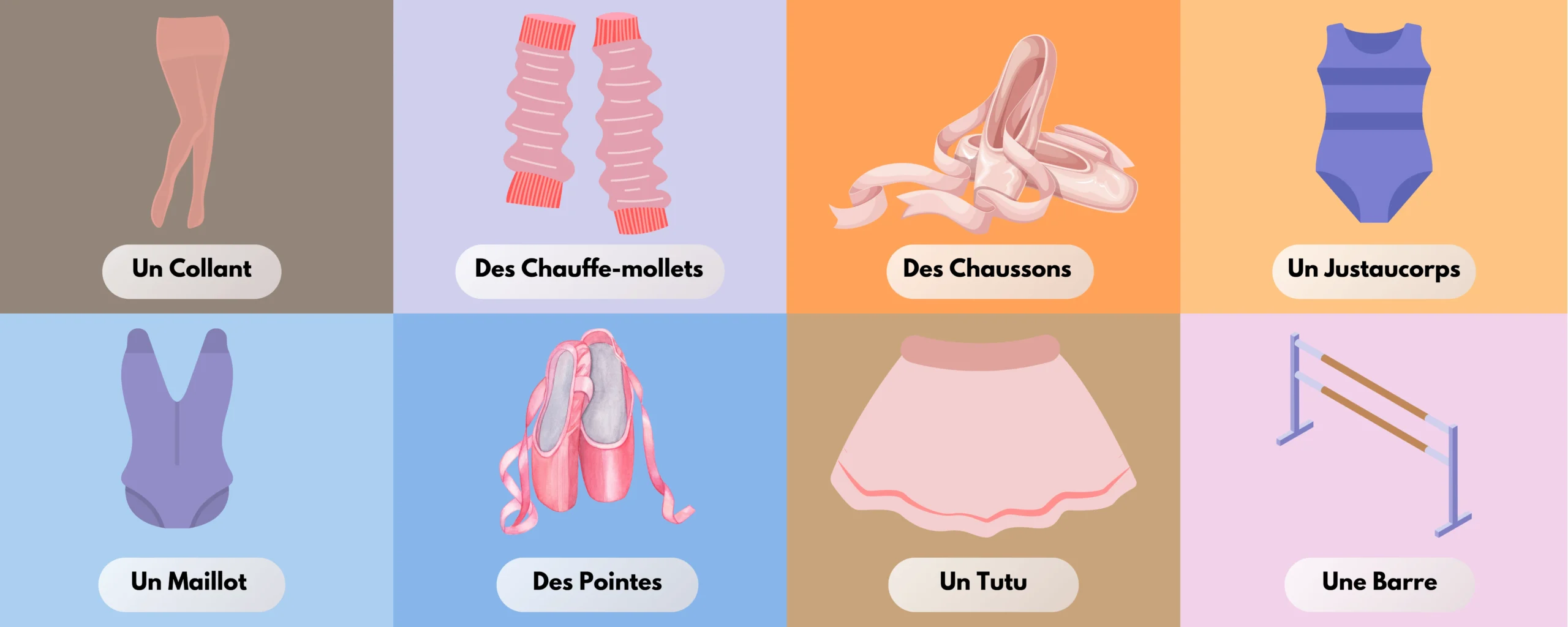
Ballet Steps and Movements
Still clueless? Here is our hand-picked list of some fun & interesting French Ballet Steps & Movements to better understand the performance next time you go to a ballet show!
| French Term | English Explanation |
|---|---|
| Cabriolet | Kicking one leg up to the back with a bent knee, then quickly straightening it and flicking the foot out before pulling it back in – Improves core engagement & hip flexibility |
| Chassé | “To chase” – A series of quick gliding steps with one foot always leading – Develops coordination & strengthens ankles |
| Pas de chat | “Step of the cat” – A quick jump featuring the feet beating together twice in mid-air before landing – Improves body agility |
| Rond de Jambe à Terre | “Round of the leg on the ground” – A circular movement of the leg at the hip joint, tracing a circle on the floor while keeping the knee straight – Improves turnout & strengthens the hip joint |
| Sauté | A simple jump from one foot to the other, landing on the other foot – Teaches basic jumping technique & air control |
| Piqué | A sharp, pointed landing on one foot after a jump – Adds a percussive quality to the dancer’s movement |
| Arabesque | Standing on one leg with the other extended behind the body and the torso leaning forward |
| Attitude | Similar to arabesque but with the working leg bent at the knee and hip |
| Battement Tendu | “Stretched beating” – A sliding motion where the foot extends from a closed position to a pointed touch on the floor before returning |
| Dégagé | Extending the leg from one position to another while brushing the floor with the foot |
| Développé | “Unfolding” the leg from a bent position to a straight extension |
| Glissade | A gliding step where one foot slides along the floor to meet the other foot, creating the illusion of “sliding” across the stage |
| Pirouette | A turn on one leg, with variations depending on arm positions and starting leg position |
| Plié | A bend of the knees, with various depths (demi-plié – half bend, grand plié – full bend) |
| Relevé | Rising up onto the balls of your feet from a flat-footed position |
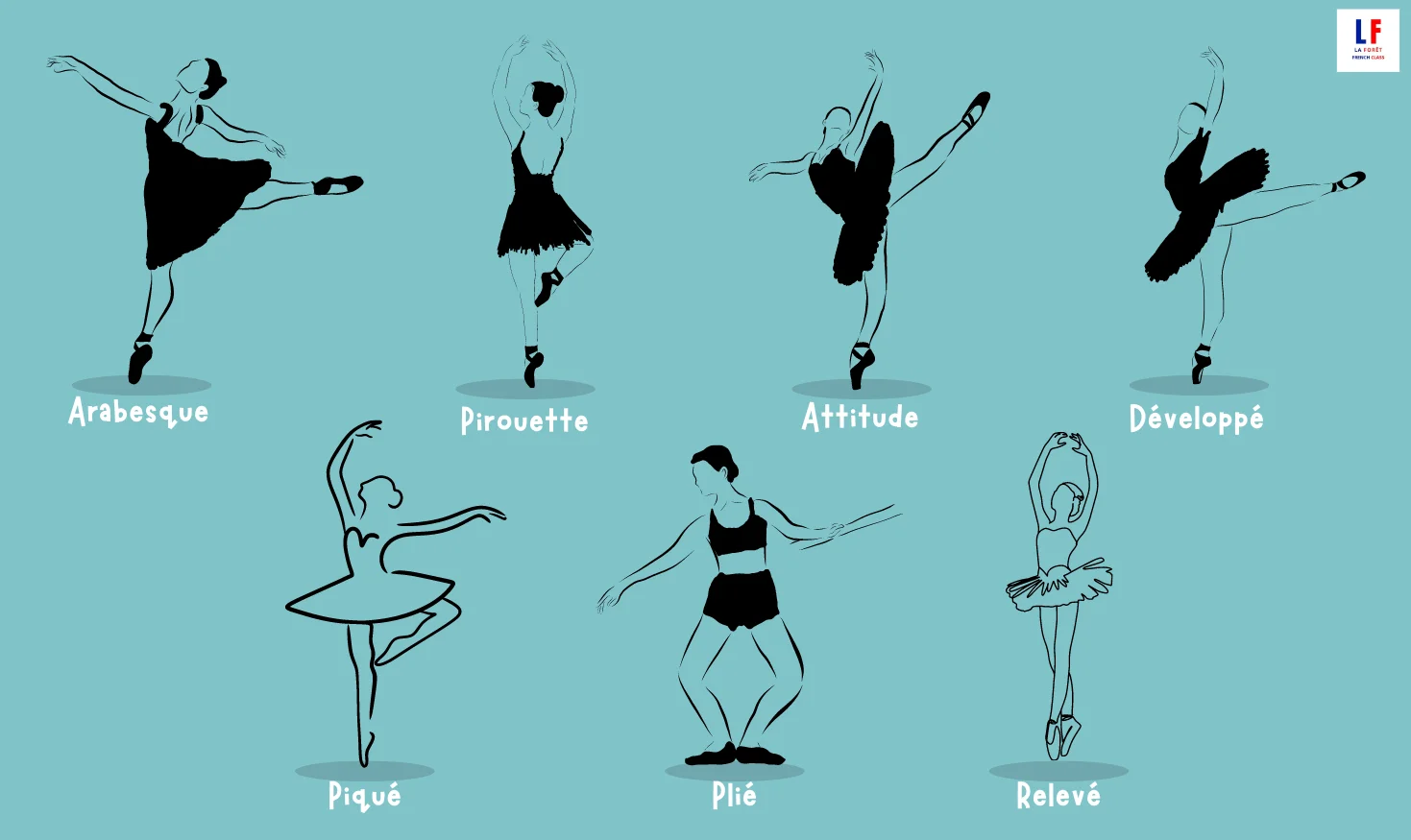
Vocab Giving You Trouble? Let’s Fix That!
Join our classes and let our teachers guide you to build a vocabulary that sticks!
Advanced Ballet Techniques
Here are some advanced ballet techniques along with their English explanations:
| French Term | English Explanation |
|---|---|
| A la quatrième devant | A position where the working leg is lifted diagonally in front of the body at hip height |
| Assemblé | “Assembled” – A jumping leap where the legs beat together in mid-air before landing |
| Brisé | A series of small jumps where the feet “break” contact with the floor very quickly |
| Entrechat | A jump where the dancer rapidly crosses their legs in the air, like a cat weaving between its legs |
| Fouetté | “Whipped” – A fast, whipping turn on one leg using the other leg to initiate and propel the rotation |
| Grand jeté | A large jump with a full leg extension in the air |
| Pas de bourrée | A quick three-step traveling step that brushes the floor and can move forwards, backwards, sideways, or even turning |
Expressive Ballet Terms
Ballet isn’t just about technical mastery. It’s also a powerful tool for storytelling and emotional expression. Here are some expressive movements that showcase artistry:
| French Term | English Explanation |
|---|---|
| Épaulement | Turning the shoulders and head slightly in a different direction than the hips and legs to express shyness (head turned slightly forward with closed shoulders) or confidence (head turned with an open shoulder facing the audience) |
| Port de bras | “Carriage of the arms” – These flowing arm movements can express emotions like joy (arms reaching upwards), sorrow (rounded arms cradling the body), or defiance (sharp, angular movements) |
| Allongé | An extension of the working leg to create a long & elegant line |
| Battement frappé | “Beaten strike” – This movement involves forcefully hitting the working foot against the standing ankle & can express anger, frustration, or a sense of urgency |
| Élancé | A jump where one leg brushes the other in the air can be used to depict tenderness or hesitation |
| En pointe | Dancing on the tip of the toes in special ballet shoes with reinforced shanks to convey lightness, weightlessness or a sense of reaching upwards |
Did You Know?
- Once upon a time, only men danced ballet
Ballet originated in Renaissance Italy, and for over a century, only male courtiers performed these elaborate dances. Women weren’t allowed to join the party until the 17th century!
- Ballet shoes get a social life
Those iconic pointe shoes, with their reinforced shanks, go through a unique process called “breaking in”. But it’s not the dancers who do it first! Senior dancers often “walk down” their pointe shoes, softening the shanks by wearing them, making them more comfortable for new dancers. Isn’t it a lovely tradition of mentorship through sharing the “burden” (and sometimes the blisters) of pointe work haha.
- Ballet can make you smarter
Studies suggest that ballet training can improve memory, focus, and spatial awareness. Just as ballet has influenced global dance culture, French fashion plays a pivotal role in shaping global style trends. Discover how these two worlds of elegance intersect.
Conclusion
Ballet and French are intricately linked. In essence, French is not just the language of ballet; it is an integral part of its heritage and practice. While understanding French isn’t essential for enjoying ballet performances, appreciating the French terms adds a deeper layer of understanding.
Knowing the meaning behind a “grand jeté” or a “piqué arabesque” allows you to visualize the movement with greater clarity and appreciate the dancer’s technique. So, the next time you witness a captivating ballet performance, remember the enduring influence of French, the language that continues to shape the art form’s beauty and precision.
Frequently Asked Questions
Q1. What are the benefits of ballet?
Ans: Not only does ballet improve posture, flexibility, strength, and coordination. It also enhances body awareness and grace. Some studies even suggest that ballet training can improve memory! It’s a workout not only for your body, but also your brain cells.
Q2. How long does it take to become a professional ballet dancer?
Ans: It typically takes years of intensive training and dedication to achieve professional status. However, it’s never too late to start something, even ballet.
